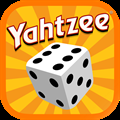Beauty is not the goal of competitive sports, but high-level sports are a prime venue for the expression of human beauty. David Foster Wallace
When you fall in love with an art there is often a moment of epiphany which lays out with perfect clarity this statement: I am witnessing true beauty. This is something many experience watching Starcraft: a quasi mystical awe, usually directed at something a player has just accomplished.
That there is a purpose to accomplishment, that is, the possibility to achieve what we might call a “feat,” is something the layman must take for granted but which the aficionado will know intimately. The innuendo of the Brood War veteran aside, Starcraft 2 is a hard game, by which I mean that only a combination of talent and hard work(1) can take you far, and often not even that is enough. Success in Starcraft requires skill that is uncanny, improbable, and - at the farthest end of the spectrum - impossible.
Consider: when MarineKing plays he executes a series of tasks, a few of which are:
Constantly checking the minimap.
Monitoring resources and supply.
Managing separate production cycles for Command Centers, Barracks, Factories and Starports.
Managing his army, or groups thereof.
Appraising and responding to the enemy.
Each of the above tasks can be integrated into a pattern of movement that forms the basic experience of playing at the highest level. But the reality is more complex: some of these tasks are made up of smaller tasks, or involve many decisions that need making instantaneously. Reacting to the enemy is often a matter of rapid improvisation, which can completely upturn your usual pattern of play. Generally speaking, the point is to perform each task simultaneously to the others. Time is a critical resource, and being able to exploit it more efficiently than your opponent gives you vast powers of movement, production and aggression.
Acquiring a sense of kinaesthetics that can deliver on this manipulation is a matter of grueling training and chess-like study of the game. But even the latter is more than thinking, in a crude sense, about the strategy of Starcraft; it’s immersing yourself in the thought of Starcraft, that pure and concentrated meditation implying a higher level of understanding.
Like chess, Starcraft 2 is a box that once opened never ends. Any single skill is worthless in front of the hugeness of the game. To keep up, the player must become a similarly infinite machine, constantly adapting. But you can only imagine the game’s possibilities to an extent. You can use your intuition to glean insight or take a guess, but in the end you are only as good as the work you put in. At the same time, everybody else is going through the same process, creating a system of relentless benchmarking.
If you throw yourself against a wall, you develop a resistance to it, but what happens when the wall throws itself against you? The benefits of competitive development are well known, and in sports its results are spectacular.
Refined to a science, the agony of effort(2) leads to the moment when strategy becomes an aesthetic and beauty through play a reality. This is when one player finds an equal in another, and the impossible struggle transforms both; when the players are not enemies but partners in a glorious performance ending with a death. The death is accepted; it is beautiful and desirable and necessary.
Endings occur to all games, but completion is a mental category enshrining an event. When a great game ends it doesn’t just vanish, it achieves its perfected and ultimate form. In other words, it becomes ready for conservation and display. While the great mass of Starcraft competition loses its identity in a sea blandness, these games remain captured. They call up the excitement in the person’s heart and color his imagination and are in turn colored by memory. The games are remembered, retold; they become the topic of public occasion and private carressings of nostalgia. Do you remember, it is often said, when Bisu 3-0’d sAviOr? And it is remembered, being a fragment of that epic which is eSports.
The now legendary finals in which the Maestro met his end is itself representative of another kind of beauty: that of one competitor’s dominance over another. This isn’t the story of one player soundly beating an inferior, but the miracle which occurs when a new face unravels the reigning champion and makes him seem not one but two tiers below: the conqueror’s all-conquering form. We can see it, for instance, in this year’s GSL Season 3 finals, in Seed vs MC.
There was something of the Bruce Lee physique in Seed’s play, something lean, agile, ever alert, a Starcraft muscle made tough and flexible which snapped to maximum tension for the briefest possible period, which was also the time Seed needed to bury MC. The description I offer is very much physical, but that’s not all there is: Seed came armed with a plan designed to be better than MC’s plan. Indeed, he displayed that Mvp-esque ability to undermine the opponent at every turn, exploiting weakness where it is obvious and creating it where it is not available. This is the ruthless play of champions. It is also the work of someone who has reached an incredible understanding of the game.
To say that Bisu came to those finals similarly armed would be a gross understatement. We have to wonder what insight and determination lead him to believe that victory and the future of PvZ would be marked by the use of a unit whose hard counter was in the DNA of a race’s entire skeleton. Corsair/DT began with that series, and sAviOr was the first joyful sacrifice that made it possible - call it a reverse Kerrigan. But the historical importance of the series shouldn’t completely eclipse its own peculiar aesthetic excellence, though it may not be possible to watch outside the spectrum of the revolution it brought.
Now, moving away from the abstract terms we have employed so far, we will look at something more concrete as HuK takes on Naniwa at the MLG Winter Championship.
By the time HuK and Naniwa meet in round seven of the losers bracket every other foreign player has been knocked out of the running. The likes of Parting, Heart, DongRaeGu and MarineKing are set to take the battle to the finals, and only one foreigner is going to enter this last phase of the competition. The unavoidable question is who will advance.
The series itself is forgettable, but for the last game: HuK opens with a 2gate proxy and slowly overwhelms Naniwa’s defense. Once Naniwa has produced two stalkers he moves out with his probes, planning to outmicro HuK in his own base rather than fight a losing battle at home.
In a vacuum a single stalker can defeat any number of zealots, but this situation is not without its handicaps: 1) HuK has a single zealot whittling down Naniwa’s buildings 2) HuK still has all his probes.
So while out in the open map HuK’s two zealots have no chance of beating Naniwa’s remaining stalker, in the confines of the main, using the probes as bait, HuK can hope to trap the stalker.
Naniwa knows this: he realizes the danger in skirting the zealots so closely and maneuvering along the mineral lines (once, the stalker is caught and almost killed,) but he also knows it is the only way to win.
At the same time, things aren’t quite as simple for HuK. Probes are his one dwindling resource; they allow him to limit Naniwa’s mobility, creating a leash of sorts. Once he runs out of probes the stalker is free to target the zealots and end the game.
This is Starcraft at its finest, most essential quality: an overarching strategic principle combined with a physical element that must never fail. Like walking a tightrope, neither player has any room for error, because when an error occurs the game - the tournament - is over.
Forget for a moment that the response fits the personality and look at the players’ reactions: in HuK the tension explodes; in Naniwa it collapses. Disappointment and elation come from the same place, which is the game, and the struggle with it and around it. We have the privilege to witness that struggle, and HuK and Naniwa have the privilege of being our heroes.
(1)Talent is the ability to achieve through intuition what others achieve through study. The dividends of talent are great, but only materialize through hard work. Hard work is meaningful effort compounded by infinite repetition; it is the ability to ignore pain, boredom, and the desire to do something else. Meaningful effort is that movement towards the human limit which in the best athletes touches and expands the limit. Much of Brood War’s history was about this process of gradual expansion, and the same has been true for Wings of Liberty.
(2)We can all understand effort. Effort gives meaning to life, our enterprises and our challenges. Our greatest efforts produce our best results, so it is no mystery that we learn to appreciate it in others.













